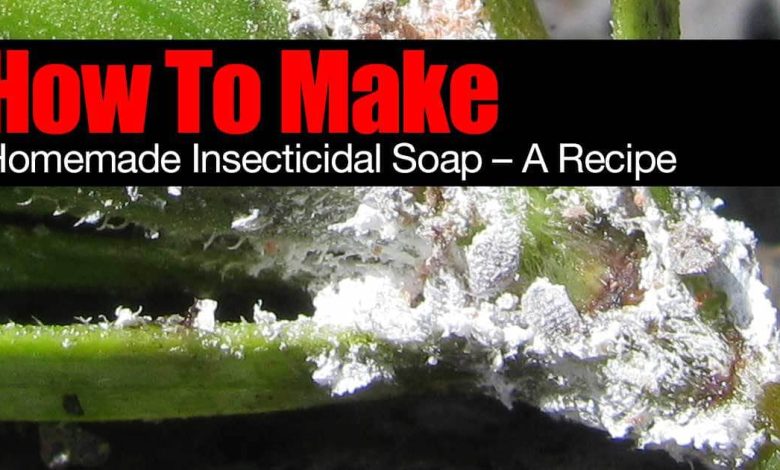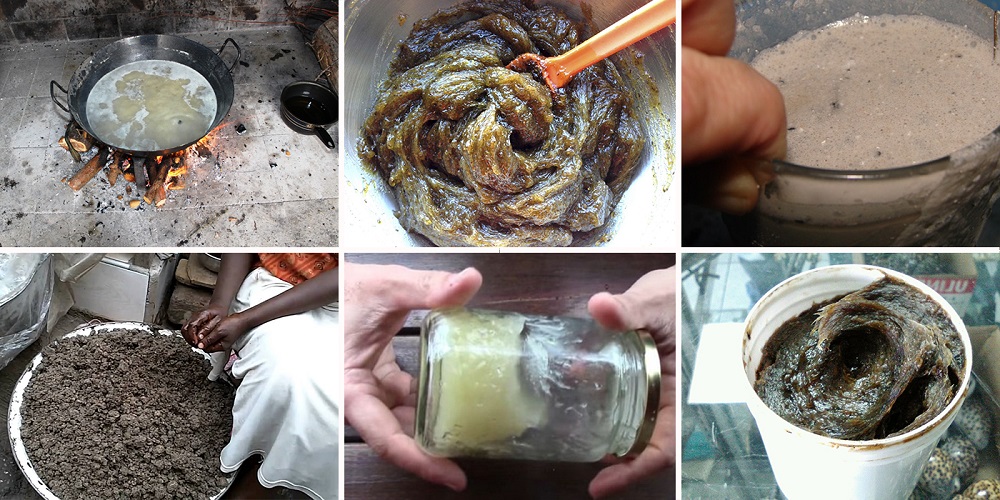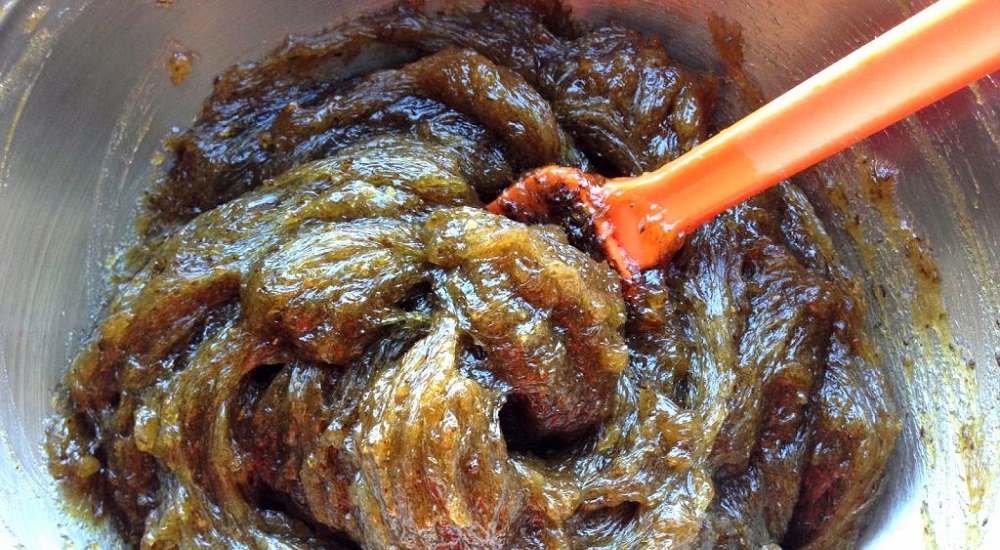Make your own potassium soap to take care of plants

Organic and ecological cultivation completely dispenses with chemical fertilizers and toxic insecticides for pest control, therefore the use of natural products, such as potassium soap, is the basis of garden care. Learn here what this product is about, what its benefits are and how to do it at home to fumigate your plants.
Known variously as potassium soap, potassium soap, or simply potash, this natural product is made up of three ingredients: water, vegetable oil, and potassium hydroxide (KOH) and is an excellent natural detergent for washing your clothes and removing tough stains. But, its main benefits can be taken advantage of in the garden.
And it is that potassium soap in any of its presentations is suitable for preparing a solution and spraying plants for the treatment of common pests such as aphids, mealybugs and some fungi.
The effectiveness of this product has no secrets, you just have to apply it to the entire plant, including the underside of the leaves where more insects tend to accumulate, since the idea is that the shell of the aphids softens due to the action of the potassium liquid soap and die of suffocation.
If you are concerned about the adverse effects of this product, you can be calm because it is completely harmless to the plant, its fruits and the other insects that help in the pollination process.
In addition, soil and water are not affected by potassium soap, nor are people and their pets. Therefore, you can use the solution several times a month for pest control and simultaneously give your plants an extra dose of nutrients.
where can i buy potassium soap
The most suitable places to buy this product are nurseries and stores specializing in garden products, since it is important to note that this soap is not suitable for personal hygiene, therefore you will not find it in pharmacies or supermarkets along with conventional soaps..
But, if you like the ease of online shopping, you will be happy to know that on the main e-commerce platforms, such as Amazon, for example, you can buy the best value for money potassium soap in different presentations according to your needs. From 250 ml to 5 liter containers, you have several options to choose the amount you want and learn how to take care of your plants with potassium soap.

How to use potassium soap
Previously we mentioned that with potassium soap a soapy solution is prepared to spray the plants and suffocate aphids, mealybugs and other invasive garden insects.
But, it is important to note that this product acts by contact, that is, when spraying you must cover the entire plant, especially the places where the parasites are concentrated, and spray them with the solution so that the protective cuticle weakens and they suffocate.
In this sense, you should know that the solution does not penetrate the plant, does not affect the fruits or damage their tissues, and when it degrades it causes a very positive rebound effect: it becomes compost.
The benefits of potassium soap are varied thanks to its main component, potassium hydroxide, which becomes an essential nutrient for the plant to carry out its photosynthesis process and absorb CO2. Similarly, potassium contributes to efficient plant growth, as well as regular ripening of their fruits.
It is precisely because of its innocuousness that the potassium soap solution can be used frequently to eliminate aphids and prevent the appearance of other pests. Now, if you cannot make your online purchase of this product or you prefer a totally homemade manufacture, we invite you to pay close attention to the following section so that you learn how to make your own potassium soap.
DIY: Homemade potassium soap
For some years now, ecological alternatives to recycling used cooking oil have made the production of artisanal soaps more popular. Most of them for domestic purposes such as dishwashers or for washing clothes.
However, there is also the possibility of making homemade potassium soap to take care of your plants, you just have to get hold of a few ingredients, follow the steps below and take the necessary precautionary measures to avoid accidents during its preparation.
Our first recommendation is to use glass, stainless steel or plastic containers and containers, and use a wooden or steel spoon to stir the mixture.
Regarding the oil, this soap can be a good way to recycle the oil that you have used in the kitchen, so you can use olive, sunflower, corn or canola. The most important thing in this case is that you must filter it using a strainer to collect the impurities in the oil. You can also use a new one, but the main idea is to reuse the one you already have at home, instead of throwing it away.
You’ll also need to wear rubber gloves and goggles, as well as a scale and electric mixer to speed up the process. Now, you should have on hand 20 g of water, 20 g of potassium hydroxide (KOH) that you can buy at a drugstore or pharmacy, and 120 g of used and filtered vegetable oil.

Step by Step
First of all, you must put on your personal protection: gloves and glasses.
Start by mixing the potassium hydroxide with the water in a glass or plastic cup, stirring until it dissolves, you will notice that the temperature of the mixture increases while the chemical reaction takes place.
When the potassium is already dissolved, set it aside and place the vegetable oil in another container and heat it in a water bath for a few minutes, then remove it from the heat and wait for it to cool down.
At this point the potash and water mixture should be at room temperature, as should the oil, so it’s time to mix them together. You will be able to see that when you stir the two mixtures it will darken, at the beginning you must do it with a spoon and when you acquire a firmer consistency you can use the mixer at medium speed for 3 minutes.
Let the mixture rest for 10 minutes and repeat the shake for 3 more minutes. Do this procedure several times until a smooth texture is achieved. Once ready you can pack it in a glass jar with an airtight lid, close it well and keep it in a dry place.
To use it on your plants, you only have to place a tablespoon of this soap in a liter of water, dissolve it well and spray your plants with that solution.

![Photo of Mother-in-law’s Seat: [Cultivation, Irrigation, Care, Pests and Diseases]](https://www.complete-gardening.com/wp-content/uploads/2022/08/mother-in-laws-seat-cultivation-irrigation-care-pests-and-diseases-390x220.jpg)
![Photo of Climate of Argentina: [Characteristics, Flora, Fauna and Adaptability]](https://www.complete-gardening.com/wp-content/uploads/2022/08/climate-of-argentina-characteristics-flora-fauna-and-adaptability-390x220.png)
![Photo of Banderillas: [Cultivation, Irrigation, Care, Pests and Diseases]](https://www.complete-gardening.com/wp-content/uploads/2021/06/Banderillas-390x220.jpg)
![Photo of Acer Campestre: [Cultivation, Irrigation, Associations, Pests and Diseases]](https://www.complete-gardening.com/wp-content/uploads/2022/08/acer-campestre-cultivation-irrigation-associations-pests-and-diseases-390x220.png)